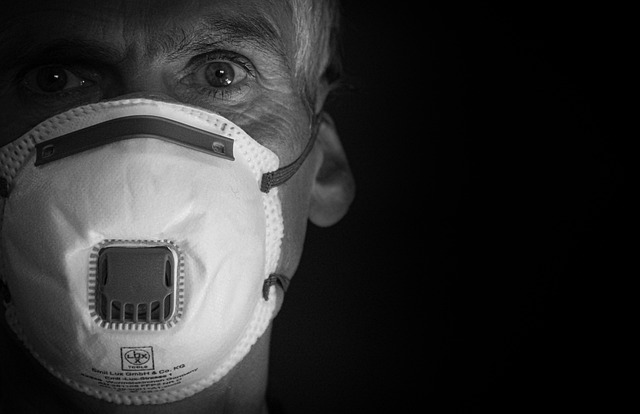In the age of instant entertainment, the living room has become a personal theater, where high‑definition movies, immersive soundtracks, and streaming services converge to deliver a cinema experience without leaving home. Yet, this convenience is shadowed by a less visible threat: malicious software that can infiltrate smart TVs, streaming devices, and even connected sound systems. As cybercriminals continuously refine their tactics, the need for reliable streaming virus protection has never been more critical. Protecting the audio‑video pipeline ensures that the magic of your home cinema remains unblemished, safeguarding both your equipment and the quality of your entertainment.
The Invisible Threat in Modern Streaming
Unlike traditional media, streaming content travels over the internet, opening doors for attackers to embed malware within the delivery stream. This can happen through compromised streaming services, infected apps, or even through insecure network connections. Once a malicious payload enters the ecosystem, it may hijack the playback process, corrupt audio and video streams, or exfiltrate personal data. The consequences range from a distorted movie to a full compromise of your home network. Recognizing these risks is the first step toward safeguarding your cinema setup.
- Malware Injection: Attackers embed code into the streaming buffer, altering playback.
- Device Hijacking: Infected smart TVs can become nodes in larger botnets.
- Data Theft: Sensitive information such as passwords and viewing habits can be siphoned off.
Key Components of Effective Streaming Virus Protection
A robust defense strategy relies on layered security measures tailored to the unique demands of audio‑video streaming. These components work together to detect, prevent, and remediate threats before they can affect the cinema experience:
- Secure Network Configuration: Using a dedicated Wi‑Fi network for streaming devices isolates them from other home traffic, reducing attack surface.
- Regular Firmware Updates: Manufacturers frequently release patches that fix vulnerabilities; keeping firmware current is essential.
- Content Filtering: Software that scans streaming data for malicious signatures can block harmful payloads in real time.
- Endpoint Monitoring: Continuous observation of device behavior helps spot anomalies such as unexpected bandwidth spikes or unauthorized outbound connections.
- User Education: Knowing how to recognize suspicious apps or links prevents initial compromise.
Choosing the Right Streaming Virus Protection Solution
Not all security tools are created equal, especially when applied to a cinema environment that demands low latency and high bandwidth. A suitable solution should balance vigilance with performance, offering:
- Real‑time scanning without buffering delays.
- Compatibility with popular streaming protocols (HLS, DASH, RTSP).
- Support for a variety of device types, from smart TVs to soundbars and home theater PCs.
- Granular logging to help troubleshoot playback issues.
Some vendors specialize in media‑centric security, integrating directly with streaming services to authenticate content before it reaches your devices. Others provide network‑level firewalls that detect and block malicious traffic before it can infiltrate any endpoint.
Building a Secure Home Cinema Network
Securing the physical network is as important as protecting individual devices. A well‑architected home cinema network typically includes:
- A dedicated router or VLAN for entertainment devices.
- Strong WPA3 encryption on Wi‑Fi links.
- Segmented SSIDs for guests and IoT devices.
- Regular network scans to identify rogue access points.
By isolating streaming traffic, you reduce the chance that a compromised device can serve as a pivot point for lateral movement across your home network. This isolation also ensures that bandwidth congestion from gaming or downloads elsewhere does not degrade your movie‑watching experience.
Maintaining Audio and Video Integrity
Even with comprehensive protection, subtle disruptions can still occur. It is crucial to monitor the integrity of audio and video streams through:
- Checksum verification for streamed segments.
- Monitoring for stutter, dropped frames, or audio distortion.
- Logging playback events to correlate with security alerts.
When anomalies are detected, swift action—such as clearing the device cache, rebooting, or temporarily disabling the device—can prevent prolonged disruption. Over time, patterns emerge that help refine security rules and improve resilience.
Case Study: A Home Theater’s Journey to Resilience
“After a series of mysterious playback glitches, we discovered that a malicious plugin had infected our smart TV’s streaming app. By implementing a dedicated streaming virus protection firewall and updating all firmware, we restored full audio‑video fidelity and eliminated future incidents.” – Alex R., Home Cinema Enthusiast
Alex’s experience illustrates that even well‑intentioned setups can fall prey to sophisticated attacks. The key takeaway? Layered defense, proactive updates, and vigilant monitoring create a resilient environment that preserves both equipment longevity and viewing pleasure.
Future Trends in Streaming Security
As streaming technology evolves, so too will the methods employed by attackers. Emerging trends that will shape future streaming virus protection strategies include:
- Artificial Intelligence‑driven anomaly detection that learns normal playback patterns.
- Encrypted content analysis that inspects metadata without decrypting the media.
- Zero‑trust network architecture applied to home IoT ecosystems.
- Integrated hardware security modules in smart TVs and soundbars.
Staying ahead of these developments requires continuous investment in both technology and knowledge. Home cinema owners should subscribe to industry updates, participate in security forums, and routinely review device vendor security advisories.
Practical Tips for Everyday Protection
Beyond the grand strategies, everyday habits can dramatically reduce risk:
- Only install apps from official marketplaces.
- Disable auto‑download features for streaming services.
- Schedule quarterly firmware updates for all devices.
- Use strong, unique passwords and enable two‑factor authentication where possible.
- Keep a backup of your critical media playlists and device settings.
Implementing these simple steps creates a layered barrier that protects both the audio‑visual experience and the broader home network. When combined with a dedicated streaming virus protection solution, they form a robust defense that keeps your cinema environment safe and your entertainment uninterrupted.




